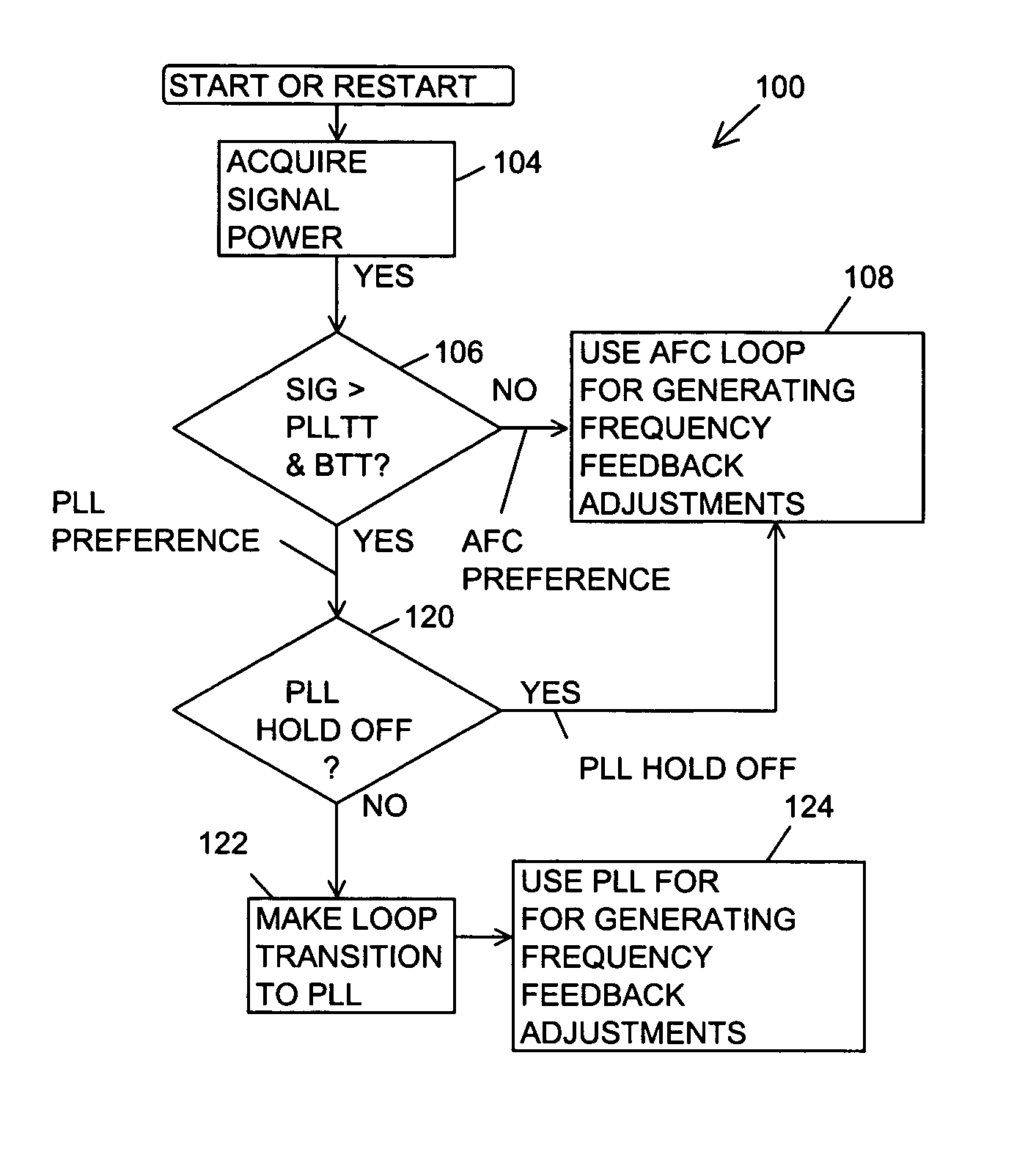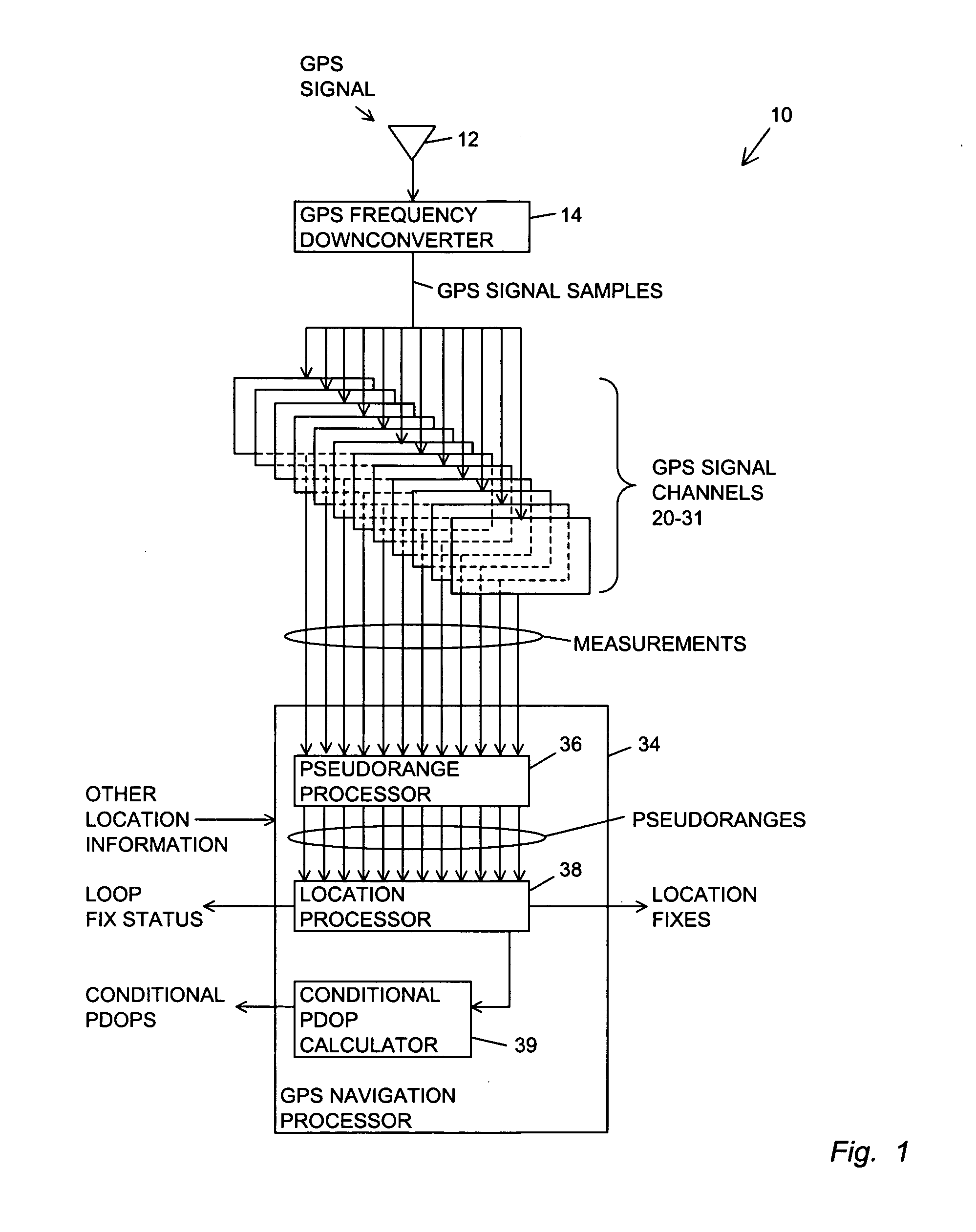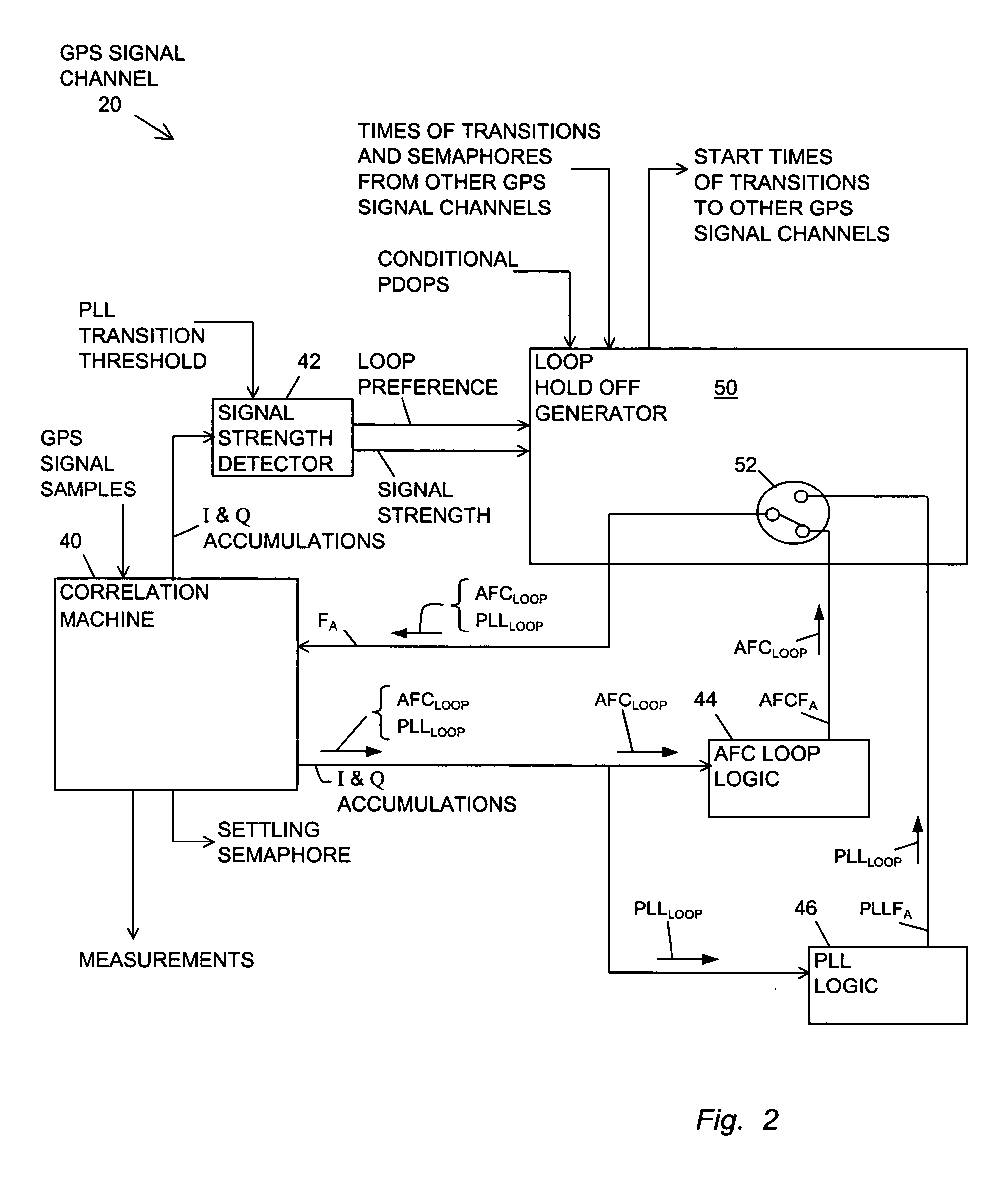GPS receiver having a phase lock loop hold off
a technology of phase lock loop and receiver, which is applied in the field of global navigation satellite system (gnss) receivers, can solve the problems of inability to accurately fix the location, phase lock loop can cycle-slip or lose lock, and may not be tolerable, so as to achieve fewer outages and fewer location jumps
- Summary
- Abstract
- Description
- Claims
- Application Information
AI Technical Summary
Benefits of technology
Problems solved by technology
Method used
Image
Examples
second embodiment
[0063]FIG. 7 is a flow chart of the step 120 for determining whether to make the loop transition from the AFC loop to the phase lock loop or to generate a PLL hold-off. A step 134B replaces the step 134A. The step 134B checks whether settling semaphores are active for any of the GPS signal channels 21-31 that were being used for location fixes. When one or more of the settling semaphores is active, the GPS receiver 10 continues in the step 108 to use the AFC loop for determining pseudoranges for computing location fixes. When no settling semaphores are active, the GPS receiver 10 in the step 136 checks whether the TCNT for the particular GPS satellite of the GPS signal channel 20 is less than the selected transition count threshold and so on as described above.
third embodiment
[0064]FIG. 8 is a flow chart of the step 120 for determining whether to make the loop transition from the AFC loop to the phase lock loop or to generate a PLL hold-off. A step 150 checks the conditional PDOP for the assigned GPS satellite against the conditional PDOP threshold. When the conditional PDOP is lower than the threshold, the GPS receiver 10 transitions to the phase lock loop and then uses the phase lock loop for determining pseudoranges for computing location fixes in the steps 122 and 124. When the conditional PDOP is greater than the threshold, the step 134A, B checks for elapsed time or active semaphores, the step 136 for testing TCNT and the step 138 for comparing to a higher signal strength as described above. It should be understood that the conditional PDOP evaluation step 150 may be before or after the steps 134A-B, 136 and 138.
[0065]FIG. 9 is a block diagram of a loop hold-off generator 150 of the present invention. The loop hold off generator 150 performs a simi...
PUM
 Login to view more
Login to view more Abstract
Description
Claims
Application Information
 Login to view more
Login to view more - R&D Engineer
- R&D Manager
- IP Professional
- Industry Leading Data Capabilities
- Powerful AI technology
- Patent DNA Extraction
Browse by: Latest US Patents, China's latest patents, Technical Efficacy Thesaurus, Application Domain, Technology Topic.
© 2024 PatSnap. All rights reserved.Legal|Privacy policy|Modern Slavery Act Transparency Statement|Sitemap



